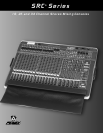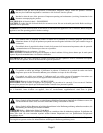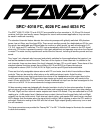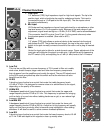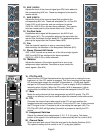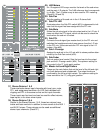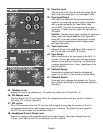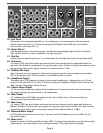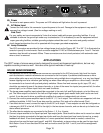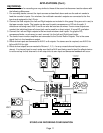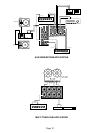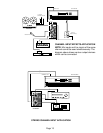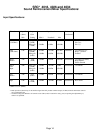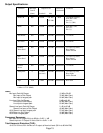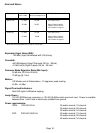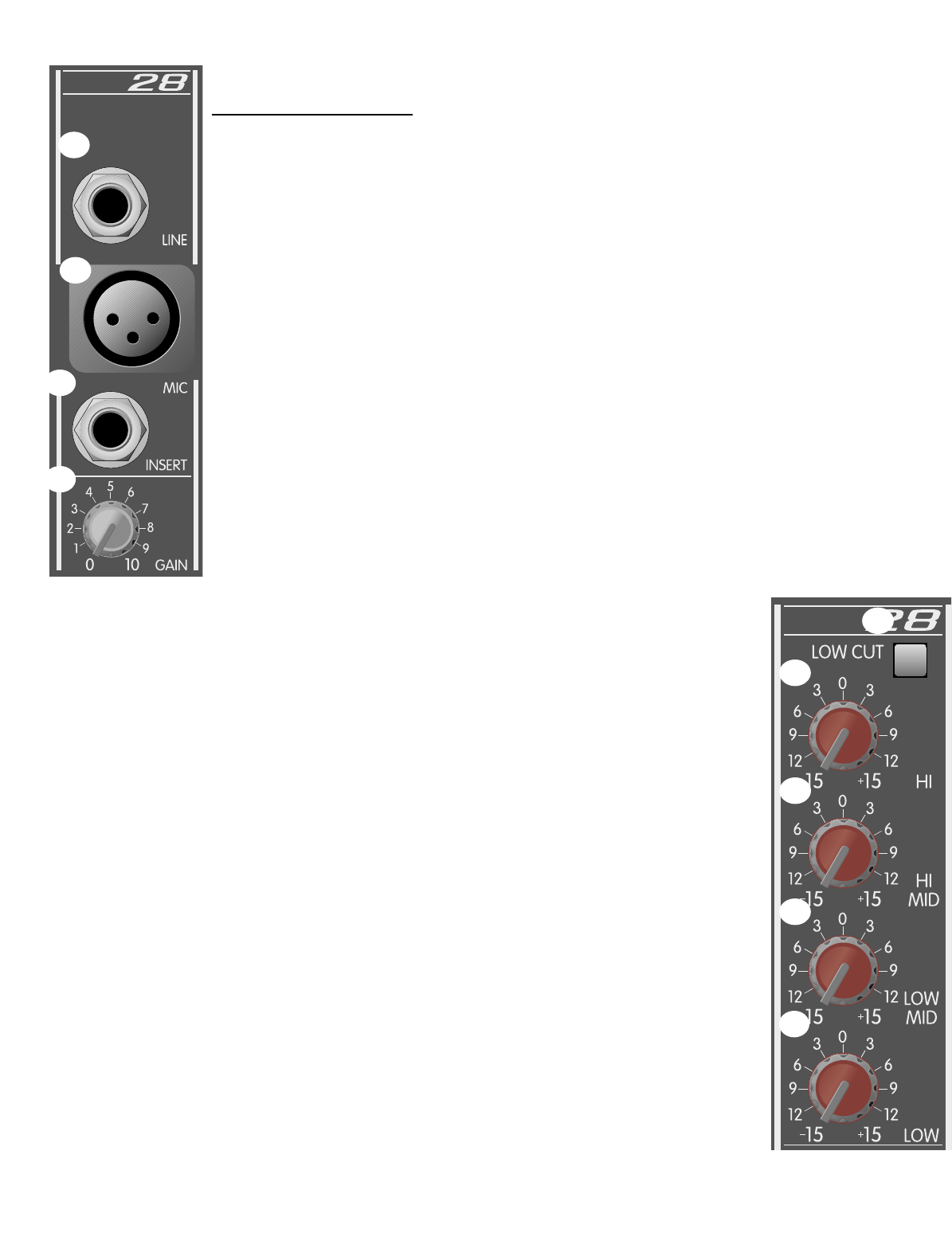
5. Low Cut
This is a low-cut filter with a corner frequency of 75 Hz used to filter out rumble,
wind noise, breath thumps, stage noise and other low-frequency components
that rob power from the amplifiers and muddy the signal. The pre-EQ signals sent
to the AUX sends are picked up after this switch so that the monitors can also
benefit from this filter.
6. Hi EQ
A shelving type of active tone control that varies the treble frequency levels
±15 dB at 12 kHz. It is designed to remove noise or to add brilliance to the signal,
depending on the quality of the source.
7. Hi/Mid EQ
A bandpass (peak/notch) type of active tone control that varies the upper mid-
range frequency levels ±15 dB at 3.1 kHz. This frequency is optimum for bringing
out the clarity of a vocal mic without adding harshness or grit, or can reduce high
frequency feedback.
8. Low/Mid EQ
A bandpass (peak/notch) type of active tone control that varies the lower mid-
range frequency levels ±15 dB at 250 Hz. A slight cut in this frequency will usually
help a mic that has a proximity effect to become more intelligible in close talking
situations. It will also be useful to solve common feedback problems.
9. Low EQ
A shelving type of active tone control that varies the bass frequency levels ±15 dB
at 70 Hz. It will add depth to thin signals or clean up muddy ones.
Channel Functions
1. Line Input
1/4" balanced (TRS) high-impedance input for high-level signals. The tip is the
positive input, which should also be used for unbalanced inputs. This input is
connected through a 10 dB pad to the Mic Input (#2). The two inputs cannot
be used simultaneously.
2. Mic Input
XLR balanced low-impedance channel input optimized for a microphone or other
low-level source. Pin 2 is the positive input. Because of the wide range of gain
adjustment, signal levels as high as +10 dBu (2.45 V RMS) can be accommodated.
This connector has 48V on pins 2 and 3 (pin 1 is the ground reference) when
the phantom power is enabled. (See note on #23.)
3. Insert
1/4" stereo (TRS) jack allows an external device to be inserted into the signal
path before the EQ. The tip has the send signal, the ring is the return input. A
switch in the jack normally connects the send to the return until a plug is inserted.
4. Gain
Varies the input gain to allow for a wide dynamic range. Proper adjustment of the
input gain will maximize the signal-to-noise ratio. It should be set by depressing
the PFL switch (#18) and adjusting for a 0 dB (+4 dBu) level at the L-R meters.
1
2
3
4
5
6
7
8
9
Page 4



